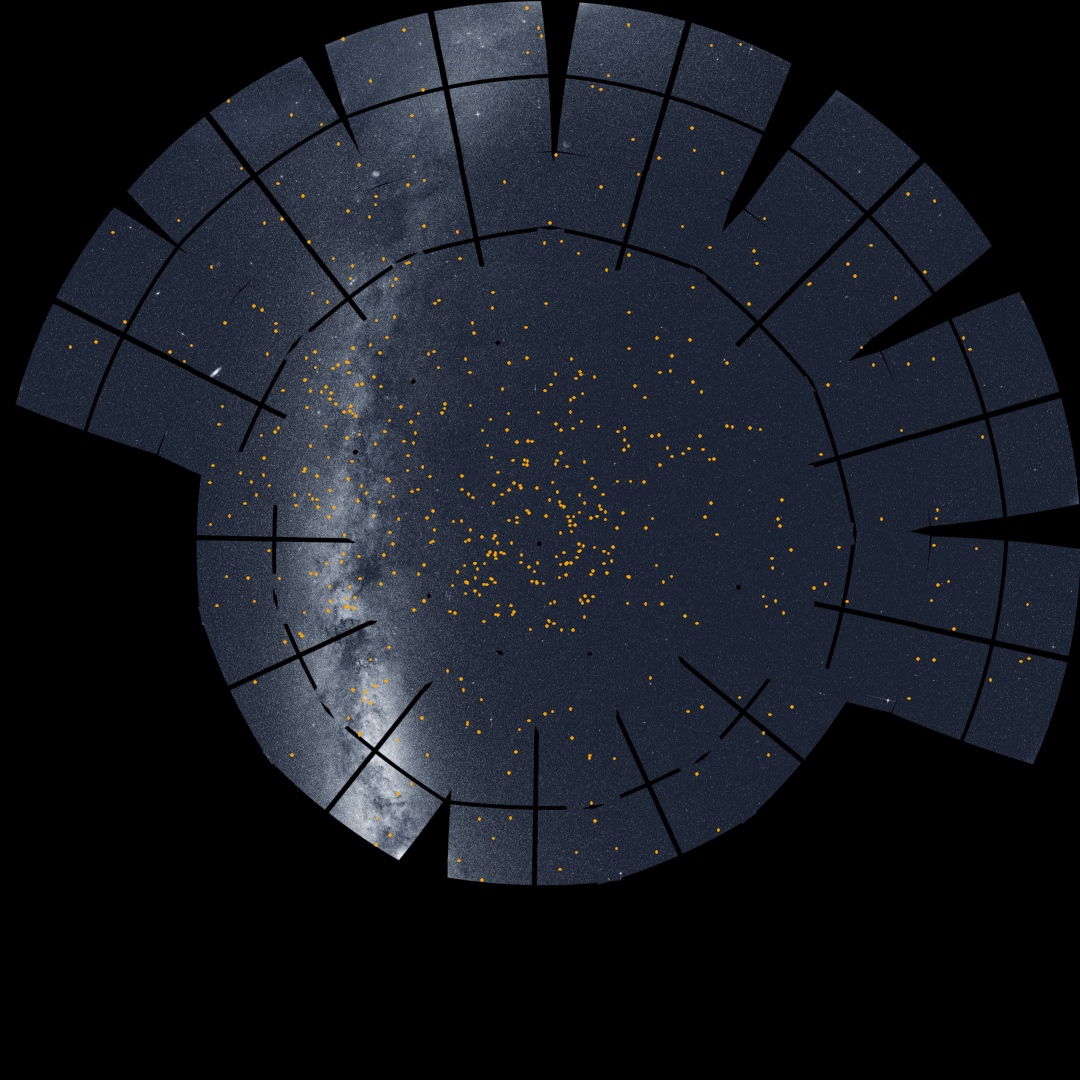TESS's Southern Sky Panorama
NASA’s Transiting Exoplanet Survey Satellite (TESS) spent a year imaging the southern sky in its search for worlds beyond our solar system. Dive into a mosaic of these images to see what TESS has found so far.
Credit: NASA's Goddard Space Flight Center
Music: “Phenomenon" from Above and Below Written and produced by Lars Leonhard
Watch this video on the NASA Goddard YouTube channel.
Complete transcript available.
The glow of the Milky Way — our galaxy seen edgewise — arcs across a sea of stars in a new mosaic of the southern sky produced from a year of observations by NASA’s Transiting Exoplanet Survey Satellite (TESS). Constructed from 208 TESS images taken during the mission’s first year of science operations, completed on July 18, the southern panorama reveals both the beauty of the cosmic landscape and the reach of TESS's cameras.
Within this scene, TESS has discovered 29 exoplanets, or worlds beyond our solar system, and more than 1,000 candidate planets astronomers are now investigating.
TESS divided the southern sky into 13 sectors and imaged each one of them for nearly a month using four cameras, which carry a total of 16 charge-coupled devices (CCDs). Remarkably, the TESS cameras capture a full sector of the sky every 30 minutes as part of its search for exoplanet transits. Transits occur when a planet passes in front of its host star from our perspective, briefly and regularly dimming its light. During the satellite’s first year of operations, each of its CCDs captured 15,347 30-minute science images. These images are just a part of more than 20 terabytes of southern sky data TESS has returned, comparable to streaming nearly 6,000 high-definition movies.
In addition to its planet discoveries, TESS has imaged a comet in our solar system, followed the progress of numerous stellar explosions called supernovae, and even caught the flare from a star ripped apart by a supermassive black hole. After completing its southern survey, TESS turned north to begin a year-long study of the northern sky.

This animated GIF builds up the southern sky mosaic from 13 TESS sectors.
Credit: NASA/MIT/TESS and Ethan Kruse (USRA)

This mosaic of the southern sky was assembled from 13 images taken by NASA’s Transiting Exoplanet Survey Satellite (TESS) during its first year of science operations, completed in July 2019. The mission divided the southern sky into 13 sectors, each of which was imaged for nearly a month by the spacecraft’s four cameras. Among the many notable celestial objects visible is the glowing band of the Milky Way, our home galaxy seen edgewise, the Orion Nebula (top), a nursery for newborn stars, and the Large Magellanic Cloud (center), a nearby galaxy located about 163,000 light-years away. The prominent dark lines are gaps between the detectors in TESS's camera system.
Credit: NASA/MIT/TESS and Ethan Kruse (USRA)
More information about what can be seen in the mosaic is highlighted in overlays below.

Overlaying the figures of selected constellations helps clarify the scale of the TESS southern mosaic.
Credit: NASA/MIT/TESS and Ethan Kruse (USRA)

The locations of nearly 1,000 candidate exoplanets identified by Sept. 1, 2019, are plotted on the TESS mosaic. Astronomers are studying these targets to confirm new worlds.
Credit: NASA/MIT/TESS and Ethan Kruse (USRA)

The host stars of the 29 TESS planet discoveries to date are shown on the mission's southern sky mosaic.
Credit: NASA/MIT/TESS and Ethan Kruse (USRA)

Many remarkable celestial objects appear in TESS's panoramic view of the southern sky. Among them, the glowing band of the Milky Way, our home galaxy seen edgewise, the Orion Nebula (top), a nursery for newborn stars, and the Large Magellanic Cloud (center), a nearby galaxy located about 163,000 light-years away. Some stars, like Alpha Centauri, are so bright they created long spike-like artifacts called saturation trails; others, like Rigel, produce ghostly smudges as their light reflects off elements of the TESS camera system.
Credit: NASA/MIT/TESS and Ethan Kruse (USRA)

The center of the TESS southern mosaic is the sky’s south ecliptic pole and the center of the mission’s southern continuous viewing zone. This is where TESS sectors overlap for improved sensitivity to transits from planets with shorter and longer orbital periods. TESS discoveries here are ideal for follow-up observations with NASA’s James Webb Space Telescope, scheduled to launch in 2021. Targets in the central portion of this zone will be continuously available for observation and monitoring by Webb.
Credit: NASA/MIT/TESS and Ethan Kruse (USRA)
For More Information
Credits
Please give credit for this item to:
NASA's Goddard Space Flight Center. However, individual items should be credited as indicated above.
-
Producer
- Scott Wiessinger (USRA)
-
Science writer
- Francis Reddy (University of Maryland College Park)
-
Visualizer
- Ethan Kruse (University of Maryland College Park)
-
Public affairs officer
- Claire Andreoli (NASA/GSFC)
-
Editor
- Scott Wiessinger (USRA)
-
Narrator
- Barb Mattson (University of Maryland College Park)
Release date
This page was originally published on Tuesday, November 5, 2019.
This page was last updated on Sunday, February 23, 2025 at 12:16 AM EST.




